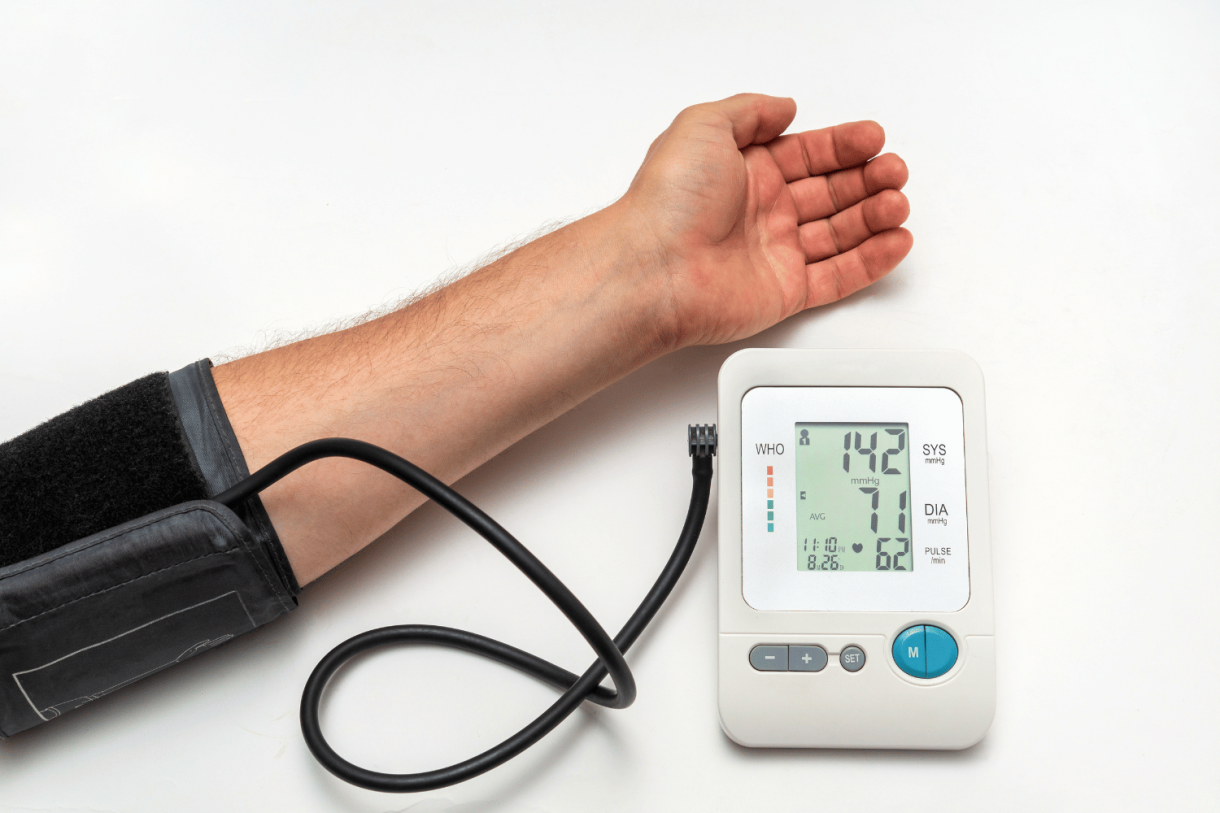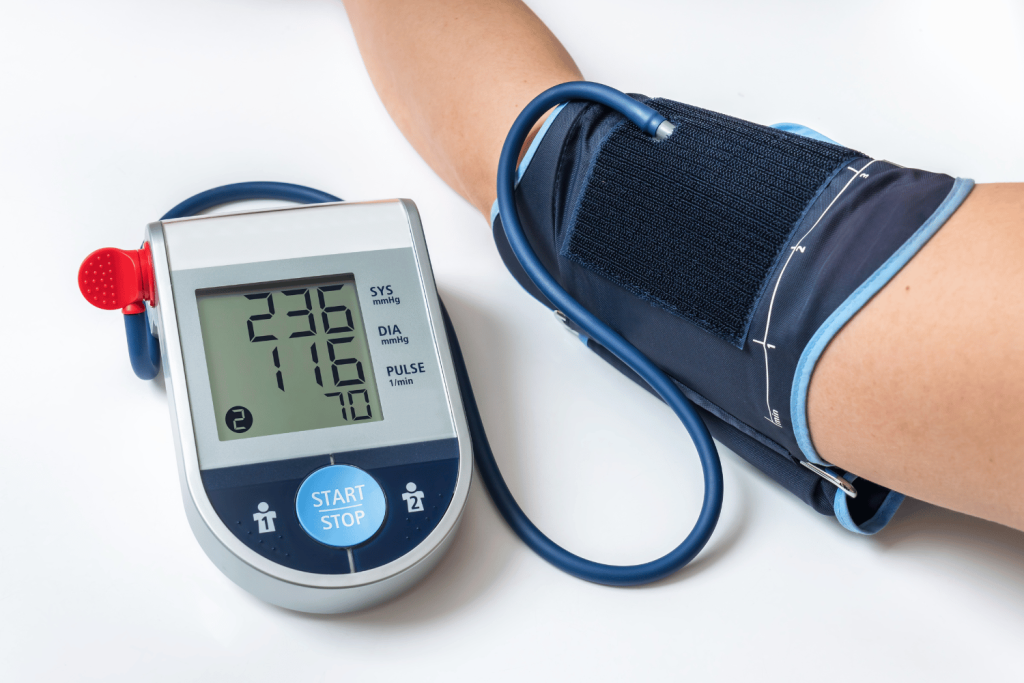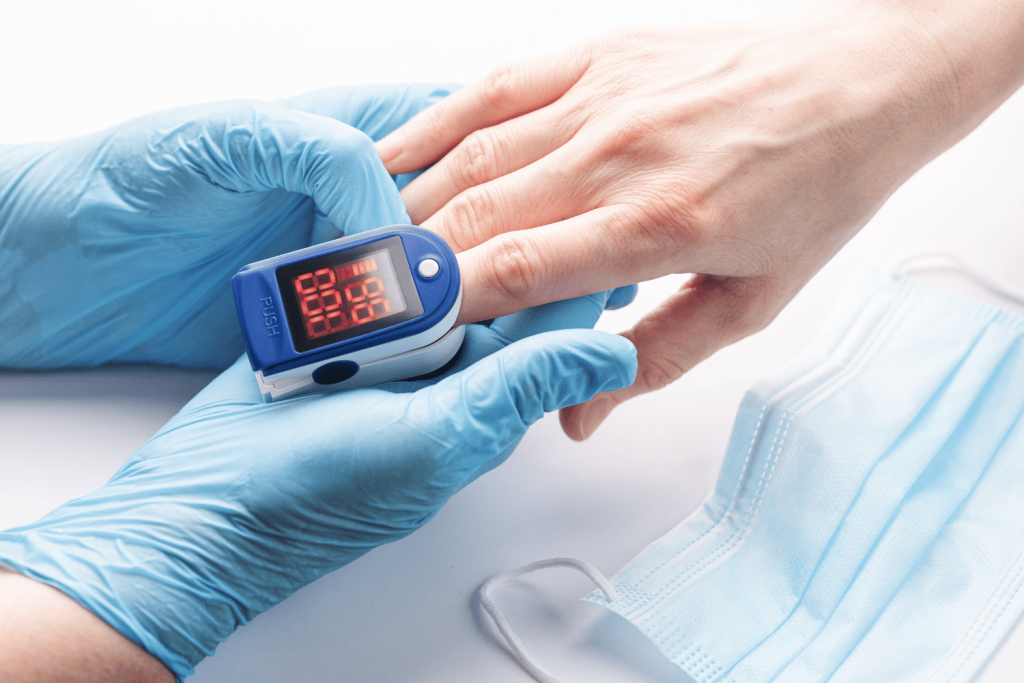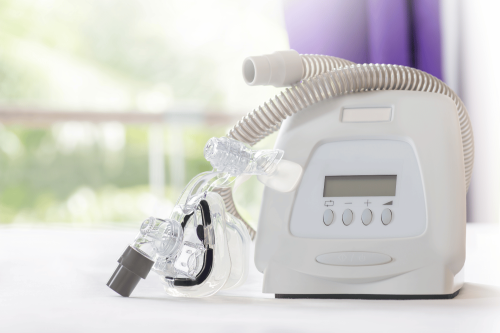
When it comes to understanding your cardiovascular health, blood pressure and heart rate are two key measurements often discussed together. While they may seem similar, they are actually quite different and provide unique insights into how your heart and circulatory system are functioning.
Blood pressure measures the force of blood against your artery walls, while heart rate counts how many times your heart beats per minute. Both are important indicators of your overall health, but they serve different purposes and can be influenced by factors such as stress, activity, and medical conditions.
In this article, we’ll explore what blood pressure and heart rate are, how they differ, and why understanding these differences is crucial for maintaining good health.
What is Blood Pressure?
Blood pressure is the force of your blood pushing against the walls of your arteries as your heart pumps. It's a key indicator of how well your circulatory system is working. This pressure ensures that oxygen and nutrients are delivered throughout your body, while also helping to remove waste products.
For most adults, a normal resting blood pressure is around 120/80 mmHg. The first number (systolic) measures the pressure when your heart beats, while the second (diastolic) measures the pressure when your heart rests between beats. Factors like diet, exercise, stress, and overall health can affect your blood pressure. We will discuss these in the coming section.
Checking your blood pressure is a great way to monitor your cardiovascular health and identify potential health issues early.

Blood pressure monitor with high pressure level on screen
What is the Normal Range for Blood Pressure?
A healthy blood pressure reading is generally below 120/80 mmHg at rest. However, this can vary based on your age, lifestyle, and overall health. For example, blood pressure can naturally increase with age as arteries become stiffer.
On the other hand, consistently high blood pressure (hypertension), typically above 130/80 mmHg, could indicate a health problem. If that happens, it’s essential to see a doctor.
Check out the table below for blood pressure ranges based on the American Heart Association guidelines for adults:
|
Category |
Systolic (top number) |
Diastolic (bottom number) |
|
|---|---|---|---|
|
Normal |
Less than 120 |
and |
Less than 80 |
|
Elevated |
120–129 |
and |
Less than 80 |
|
Hypertension Stage 1 |
130–139 |
or |
80–89 |
|
Hypertension Stage 2 |
140 or higher |
or |
90 or higher |
|
Hypertensive Crisis |
Higher than 180 |
and/or |
Higher than 120 |
Note: These values are general guidelines for adults, and individual variations may occur.
Checking your blood pressure regularly can help you understand your heart health. If it's a lot different from what's normal for you, it's a good idea to talk to a doctor.
Method of Measuring Blood Pressure
Checking your blood pressure is straightforward. You can do it at home with a monitor or have it checked by a healthcare provider. To do it yourself, you will need an automatic blood pressure cuff.
Sit quietly for a few minutes with your back straight and feet flat on the floor. Wrap the cuff around your bare upper arm, just above the elbow. The cuff should be snug but not too tight. Press the start button, and the cuff will inflate and then slowly deflate, taking the reading. It will display your systolic and diastolic blood pressure readings.
For the most accurate results, avoid caffeine, exercise, and smoking for 30 minutes before taking a measurement. It’s also best to take two or three readings a few minutes apart and average the results.
Just remember, home monitors are convenient but should be checked against a doctor's office machine occasionally to ensure accuracy.
What is Heart Rate?
Heart rate is the number of times your heart beats per minute. It shows how efficiently your heart is pumping blood throughout your body. You can often feel your heart rate as a pulse in places like your wrist or neck.
For most adults, a normal resting heart rate is between 60 and 100 beats per minute (bpm). Highly trained athletes, however, might have a resting heart rate of 40 to 60 bpm because their hearts are stronger.
Factors like your age, fitness level, stress, medications, and overall health can affect your heart rate. Keeping track of it can help you understand your cardiovascular health and spot potential issues.

Pulse oximeter measuring oxygen saturation in blood and heart rate
Method of Measuring Heart Rate
Measuring your heart rate is a simple process that can provide valuable insights into your health. Here’s how you can do it:
1. Choose a Measurement Site
To check your heart rate, find a pulse point where an artery is close to the skin. The most common spots are the inside of your wrist, the side of your neck, or the top of your foot.
To find your wrist pulse, place your index and middle fingers on the underside of your opposite wrist, just below the base of your thumb. For your neck, place two fingers on the side of your windpipe. Press gently until you feel the beat. These spots are easy to access and provide a clear reading of your heart rate.
2. Count the Beats
Once you have found your pulse, use a clock or watch with a second hand to count the number of beats you feel in 30 seconds.
Multiply that number by two to get your heart rate in beats per minute (bpm). For instance, if you count 35 beats in 30 seconds, your heart rate is 70 bpm. This method is a quick and accurate way to check your heart rate while at rest.
3. Consider the Timing
The ideal time to measure your resting heart rate is in the morning, shortly after you wake up and before you get out of bed. At this time, your body is in a state of complete rest, which gives you the most accurate reading.
Avoid checking your heart rate immediately after exercising, feeling stressed, or consuming caffeine, as these activities can temporarily raise it. If you’ve had coffee, wait at least 30 minutes before taking a measurement.
4. Use a Timer
Using a timer helps ensure you measure your heart rate accurately. It allows you to count the beats over a specific period, such as 30 or 60 seconds.
You can use a stopwatch, the second hand on a clock, or the timer function on your phone. Start the timer as you begin counting the beats and stop when the time is up. If you count for 30 seconds, remember to double the result to find your beats per minute. Correct timing is key for an accurate measurement.
What is the Normal Range of Heart Rate?
Your heart beats continuously, even at rest. For most healthy adults, a normal resting heart rate falls between 60 and 100 beats per minute (bpm). However, this number can vary from person to person.
Factors such as age, fitness, and overall health play a significant role. For example, athletes often have resting heart rates below 60 bpm, sometimes as low as 40 bpm. This is because regular exercise strengthens the heart muscle, allowing it to pump blood more efficiently.
A lower resting heart rate generally indicates good cardiovascular fitness, but if your heart rate is consistently too high or too low, it could signal an issue. If you experience dizziness, shortness of breath, or fainting, it's best to consult a doctor.
Here is a quick guide to normal heart rates for different age groups:
|
Age Group |
Normal Resting Heart Rate (bpm) |
|---|---|
|
Newborns (0–1 month) |
100–160 |
|
Infants (1–11 months) |
80–160 |
|
Children (1–2 years) |
80–130 |
|
Children (3–4 years) |
80–120 |
|
Children (5–6 years) |
75–115 |
|
Children (7–9 years) |
70–110 |
|
Children (10 years and older) and Adults |
60–100 |
|
Well-trained Adult Athletes |
40–60 |
These ranges are general guidelines; individual variations can occur. For example, a well-trained athlete may have a resting heart rate as low as 40 bpm.
Key Differences Between Blood Pressure and Heart Rate
Blood pressure and heart rate might sound related, but they measure two different aspects of your cardiovascular health. Knowing how they compare can help you better understand your body. Check out this table to see how they stack up.
|
Aspect |
Blood Pressure |
Heart Rate |
|---|---|---|
|
Definition |
The force of blood pushing against artery walls. |
The number of times the heart beats per minute. |
|
Measurement |
Measured with a blood pressure cuff, giving two numbers (systolic/diastolic). |
Measured by feeling the pulse or using a heart rate monitor. |
|
Normal Range |
Around 120/80 mmHg for a resting adult. |
60–100 beats per minute for a resting adult. |
|
Clinical Significance |
Indicates risk for heart disease, stroke, and kidney disease. |
Reflects heart efficiency and fitness level. |
Blood pressure and heart rate are both critical health indicators, but they are not the same. Understanding their differences helps doctors get a complete picture of your heart health.
Factors Influencing Blood Pressure and Heart Rate
A lot of things can change your blood pressure and heart rate. Knowing what affects these key vitals can really help you take better care of your cardiovascular health.
1. Physical Activity
When you exercise, your muscles need more oxygen. This causes your heart rate to speed up and your blood pressure to rise temporarily to meet the demand. This immediate response helps deliver oxygen-rich blood more efficiently throughout your body. Regular exercise strengthens your heart, which can lead to a lower resting heart rate and healthier blood pressure over time.
2. Emotional States
When you feel stressed, anxious, or even very excited, your body’s “fight or flight” response kicks in. This releases hormones like adrenaline that make your heart beat faster and your blood vessels constrict, raising both your heart rate and blood pressure. For example, public speaking can make your heart pound and blood pressure spike. Chronic stress can keep these levels high, contributing to long-term heart problems.
3. Diet and Hydration
Your diet significantly impacts both metrics. A high-salt diet can increase blood pressure by causing fluid retention. Dehydration can cause your heart rate to increase and your blood pressure to drop as your body tries to compensate for lower blood volume.
4. Medications and Stimulants
Some medications, like decongestants, and stimulants like caffeine and nicotine, can make your heart beat faster and raise your blood pressure. They do this by stimulating your nervous system. On the other hand, certain prescription drugs, like beta-blockers, are designed to slow your heart rate and lower blood pressure. It’s good to know how these things can affect your cardiovascular system.
5. Hormonal Fluctuations
Hormones play a significant role in regulating your cardiovascular system. For example, thyroid hormones directly affect heart rate and blood pressure. An overactive thyroid (hyperthyroidism) can cause both to rise, leading to a racing heart. An underactive thyroid (hypothyroidism) can sometimes have the opposite effect. Stress hormones, such as cortisol, also elevate both heart rate and blood pressure.
6. Health Conditions
Specific health problems can affect both heart rate and blood pressure:
- Kidney Disease: Poor kidney function can lead to fluid buildup and hormonal changes that raise blood pressure.
- Diabetes: This condition can damage arteries and affect nerve control, leading to high blood pressure and heart rate issues.
- Sleep Apnea: Frequent pauses in breathing during sleep strain the heart, increasing both blood pressure and heart rate. If you notice consistent changes, it is a good idea to see a doctor.
7. Body Weight
Carrying extra weight puts more strain on your heart, forcing it to work harder to pump blood. This can lead to a higher resting heart rate and increased blood pressure. Losing weight is one of the most effective ways to lower both blood pressure and reduce your risk for heart disease. Maintaining a healthy weight helps your cardiovascular system work more efficiently.
8. Age
As you get older, your arteries can become stiffer and less flexible, which often leads to a gradual increase in blood pressure. While resting heart rate doesn't typically change much with age, the heart's response to exercise might become slower. These age-related changes are regular, but a healthy lifestyle can help manage their impact.
How to Measure Blood Pressure and Heart Rate
Measuring your blood pressure and heart rate is a straightforward process that can provide valuable insights into your cardiovascular health. Here’s how you can do it accurately at home.
1. How to Measure Your Blood Pressure
To measure blood pressure, you'll need an automatic monitor. Prepare by resting for five minutes with your back supported and feet flat on the ground. Avoid caffeine or exercise for 30 minutes beforehand.
Wrap the cuff snugly around your bare upper arm, about an inch above the bend of your elbow. Rest your arm on a flat surface, like a table, with the cuff at heart level. Press the start button and remain still and quiet as the cuff inflates and deflates. The monitor will display your systolic and diastolic readings.
2. How to Measure Your Heart Rate
You can measure your heart rate manually or with a device. To do it manually, find your pulse on your wrist or neck.
Place your index and middle fingers on the inside of your wrist, just below your thumb, or on the side of your neck next to your windpipe. Once you feel the pulse, count the beats for 30 seconds, then multiply by 2 to get your beats per minute (bpm). For example, 35 beats in 30 seconds equals a heart rate of 70 bpm. Alternatively, fitness trackers and smartwatches automatically measure it.
3. Consider the Timing
The best time to check your resting blood pressure and heart rate is in the morning, shortly after you wake up and before you have coffee or start your day. This gives you the most accurate baseline reading.
Don’t take measurements right after exercising, when you're feeling stressed, or after eating a large meal, as these can temporarily elevate your readings. For blood pressure, it's best to take 2 or 3 readings a minute apart and average them for accuracy.
4. Use the Right Tools
For blood pressure, use a validated automatic cuff-style monitor on your upper arm. Wrist monitors are less accurate. Ensure the cuff size is correct for your arm to get a reliable reading.
For heart rate, use a timer on your phone or a watch with a second hand to count accurately for 30 or 60 seconds. Fitness trackers offer convenience by providing continuous heart rate data, but manual checks are a good way to verify their accuracy.
When to Seek Medical Advice
Keeping an eye on your blood pressure and heart rate is super important for your health. Typically, an adult’s resting blood pressure should be below 120/80 mmHg, and their heart rate should be between 60 and 100 beats per minute.
If your blood pressure is consistently high (hypertension, >130/80 mmHg) or very low (hypotension), or if your heart rate is too fast (tachycardia, >100 bpm) or too slow (bradycardia, <60 bpm), you should see a doctor, especially if you feel dizzy, have chest pain, or are short of breath.
For instance, a blood pressure reading over 180/120 mmHg is a medical emergency. Don't ignore consistent abnormal readings—get them checked out.
Take Charge of Your Cardiovascular Health
Knowing your blood pressure and heart rate is super essential for tracking your heart health. Blood pressure measures the force of blood on your artery walls, while heart rate is how many times your heart beats per minute. They are two different but equally vital signs. Checking these numbers regularly can help you spot any health problems early. If you notice your blood pressure is consistently high, or your heart rate is too fast or slow, it’s a good idea to talk to a doctor. A healthy lifestyle and regular monitoring are key to making sure everything’s okay.
FAQs
1. Are blood pressure and heart rate the same thing?
No, blood pressure and heart rate are different. Blood pressure measures the force of blood against artery walls, while heart rate is the number of times your heart beats per minute. Both are key indicators of heart health but measure different functions.
2. Can high blood pressure cause a high heart rate?
Not always. While stress or exercise can temporarily raise both, they don't always move together. It is possible to have high blood pressure with a normal heart rate. They are controlled by different systems in the body.
3. What is a normal blood pressure and heart rate?
A normal resting blood pressure for most adults is around 120/80 mmHg. A normal resting heart rate is between 60 and 100 beats per minute (bpm). These ranges can vary based on factors like age, fitness level, and overall health.
4. How can I measure my blood pressure and heart rate at home?
You can measure blood pressure with an automatic, digital blood pressure monitor on your upper arm. Heart rate can be measured with a fitness tracker or by manually checking your pulse on your wrist or neck for 30 seconds and multiplying by two.
5. When should I see a doctor about my blood pressure or heart rate?
You should see a doctor if your blood pressure is consistently high (above 130/80 mmHg) or if your resting heart rate is consistently above 100 bpm or below 60 bpm, especially if you have symptoms like dizziness, chest pain, or shortness of breath.








 Login with Google
Login with Google Login with Facebook
Login with Facebook